CASTELL COCH is one of Wales’ most visited castles, however its history is one of disinterest and abandonment, spending more time empty and falling apart than occupied.
The first castle on the Castell Coch site was probably built after 1081, during the Norman invasion of Wales. It formed one of a string of eight fortifications intended to defend the newly conquered town of Cardiff and control the route along the Taff Gorge.
It took the form of a raised, earth-work motte, about 35 metres across at the base and 25 metres on the top, protected by the surrounding steep slopes.
The 16th-century historian Rice Merrick claimed that the castle was built by the Welsh lord Ifor ap Meurig, but there are no records of this phase of the castle’s history and modern historians doubt this account.
The first castle was probably abandoned after 1093 when the Norman lordship of Glamorgan was created, changing the line of the frontier.
In 1267, Gilbert de Clare, who held the Lordship of Glamorgan, seized the lands around the town of Senghenydd in the north of Glamorgan from their native Welsh ruler.
Caerphilly Castle was built to control the new territory and Castell Coch—strategically located between Cardiff and Caerphilly—was reoccupied.
A new castle was built in stone around the motte, comprising a shell-wall, a projecting circular tower, a gatehouse and a square hall above an undercroft.
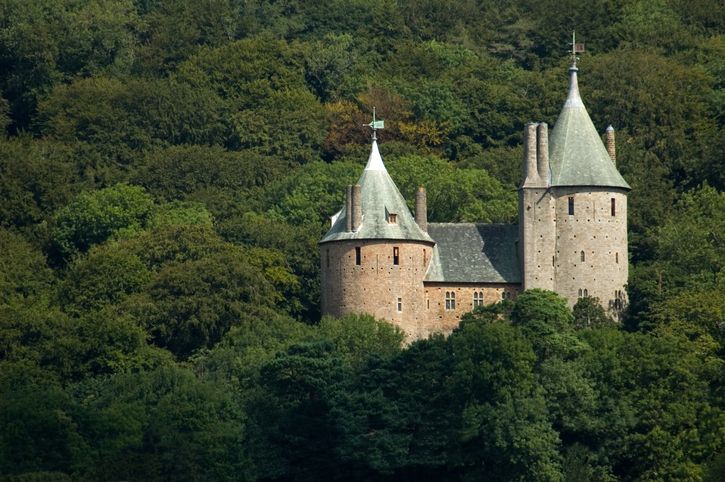
The north-west section of the walls was protected by a talus and the sides of the motte were scarped to increase their angle, all producing a small but powerful fortification.
Further work followed between 1268 and 1277, which added two large towers, a turning-bridge for the gatehouse and further protection to the north-west walls.
On Gilbert’s death, the castle passed to his widow Joan and around this time it was referred to as Castrum Rubeum, Latin for “the Red Castle”, probably after the colour of the Red sandstone defences.
Gilbert’s son, also named Gilbert, inherited the property in 1307. He died at the Battle of Bannockburn in 1314, triggering an uprising of the native Welsh in the region.
Castell Coch was probably destroyed by the rebels in July 1314, and possibly slighted to put it beyond any further use; it was not rebuilt and the site was abandoned.
Castell Coch remained derelict; the antiquarian John Leland, visiting around 1536, described it as “all in ruin, no big thing but high”.
The artist and illustrator Julius Caesar Ibbetson painted the castle in 1792, depicting substantial remains and a prominent tower, with a lime kiln in operation alongside the fortification.
Stone from the castle may have been robbed and used to feed the kilns during this period.
A similar view was sketched by an unknown artist in the early 19th century, showing more trees around the ruins; a few years later, Robert Drane recommended the site as a place for picnics and noted its abundance in wild garlic.
The ruins were acquired by the Earls of Bute in 1760, when John Stuart, the 3rd Earl and, from 1794, the 1st Marquess, married Lady Charlotte Windsor, adding her estates in South Wales to his inheritance.
John’s grandson, John Crichton-Stuart, developed the Cardiff Docks in the first half of the 19th century; although the docks were not especially profitable, they opened opportunities for the expansion of the coal industry in the South Wales valleys, making the Bute family extremely wealthy.
The 2nd Marquess carried out exploration for iron ore at Castell Coch in 1827 and considered establishing an ironworks there.
The 3rd Marquess of Bute, another John Crichton-Stuart, inherited the castle and the family estates as a child in 1848. On his coming of age, Bute’s landed estates and industrial inheritance made him one of the wealthiest men in the world.
Interest in medieval architecture increased in Britain during the 19th century, and in 1850 the antiquarian George Clark surveyed Castell Coch and published his findings, the first major scholarly work about the castle.
The ruins were covered in rubble, ivy, brushwood and weeds; the keep had been largely destroyed and the gatehouse was so covered with debris that Clark failed to discover it.
Nonetheless, Clark considered the external walls “tolerably perfect” and advised that the castle be conserved, complete with the ivy-covered stonework.
In 1871, Bute asked his chief Cardiff engineer, John McConnochie, to excavate and clear the castle ruins.
The report on the investigations was produced by William Burges, an architect with an interest in medieval architecture who had met Bute in 1865.

The Marquess subsequently employed him to redevelop Cardiff Castle in the late 1860s, and the two men became close collaborators.
Burges’s lavishly illustrated report, which drew extensively on Clark’s earlier work, laid out two options: either conserve the ruins or rebuild the castle to create a house for occasional occupation in the summer.
On receipt of the report, Bute commissioned Burges to rebuild Castle Coch in a Gothic Revival style.
The reconstruction of Castell Coch was delayed until 1875, because of the demands of work at Cardiff Castle and an unfounded concern by the Marquess’s trustees that he was facing bankruptcy.
On commencement, the Kitchen Tower, Hall Block and shell wall were rebuilt first, followed by the Well Tower and the Gatehouse, and the Keep Tower last.
Burges’s drawings for the proposed rebuilding survive at the Bute seat of Mount Stuart.The drawings were supplemented by a large number of wooden and plaster models, from smaller pieces to full-size models of furniture.
The bulk of the external work was complete by the end of 1879. The result closely followed Burges’s original plans, with the exception of an additional watch tower intended to resemble a minaret, and some defensive timber hoardings, both of which were not undertaken.
Clark continued to advise Burges on historical aspects of the reconstruction and the architect tested the details of proposed features, such as the drawbridge and portcullis, against surviving designs at other British castles.
Burges’s team of craftsmen at Castell Coch included many who had worked with him at Cardiff Castle and elsewhere. John Chapple, his office manager, designed most of the furnishings and furniture, and William Frame acted as clerk of works.[
Burges died in 1881 after catching a severe chill during a site visit to the castle. His brother-in-law, the architect Richard Pullan, took over the commission and delegated most of the work to Frame, who directed the work on the interior until its completion in 1891.
Bute and his wife Gwendolen were consulted over the details of the interior decoration; replica family portraits based on those at Cardiff were commissioned to hang on the walls.
Clark approved of the result, commenting in 1884 that the restoration was in “excellent taste”.
An oratory originally built on the roof of the Well Tower was removed before 1891 but in other respects the completed castle was left unaltered. The castle was not greatly used; the Marquess rarely visited after its completion.
The property had probably only been intended for limited, informal use, for example as a retreat following picnics. Although it had reception rooms suitable for large gatherings, it had only three bedrooms and was too far from Cardiff for casual visits.
The restored castle initially received little interest from the architectural community, possibly because the total rebuilding of the castle ran counter to the increasingly popular late-Victorian philosophy of conserving older buildings and monuments.
Bute died in 1900 and his widow, the Marchioness, was given a life interest in Castell Coch; during her mourning, she and her daughter, Lady Margaret Crichton-Stuart, occupied the castle and made occasional visits thereafter.
Production in the castle vineyards ceased during the First World War due to the shortages of the sugar needed for the fermentation process, and in 1920 the vineyards were uprooted.
John, the 4th Marquess, acquired the castle in 1932 but made little use of it. He also began to reduce the family’s investments in South Wales. The coal trade had declined after 1918 and industry had suffered during the depression of the 1920s; by 1938, the great majority of the family interests, including the coal mines and docks, had been sold off or nationalised.
The 5th Marquess of Bute, another John, succeeded in 1947 and, in 1950, he placed the castle in the care of the Ministry of Works. The Marquess also disposed of Cardiff Castle, which he gave to the city, removing the family portraits from the castle before doing so.
In turn, the paintings in Castell Coch were removed by the ministry and sent to Cardiff, the National Museum of Wales providing alternatives from their collection for Castell Coch.
Academic interest in the property grew, with publications in the 1950s and 1960s exploring its artistic and architectural value.
Since 1984, the property has been administered by Cadw, an agency of the Welsh Government, and is open to the public; it received 69,466 visitors in 2011.


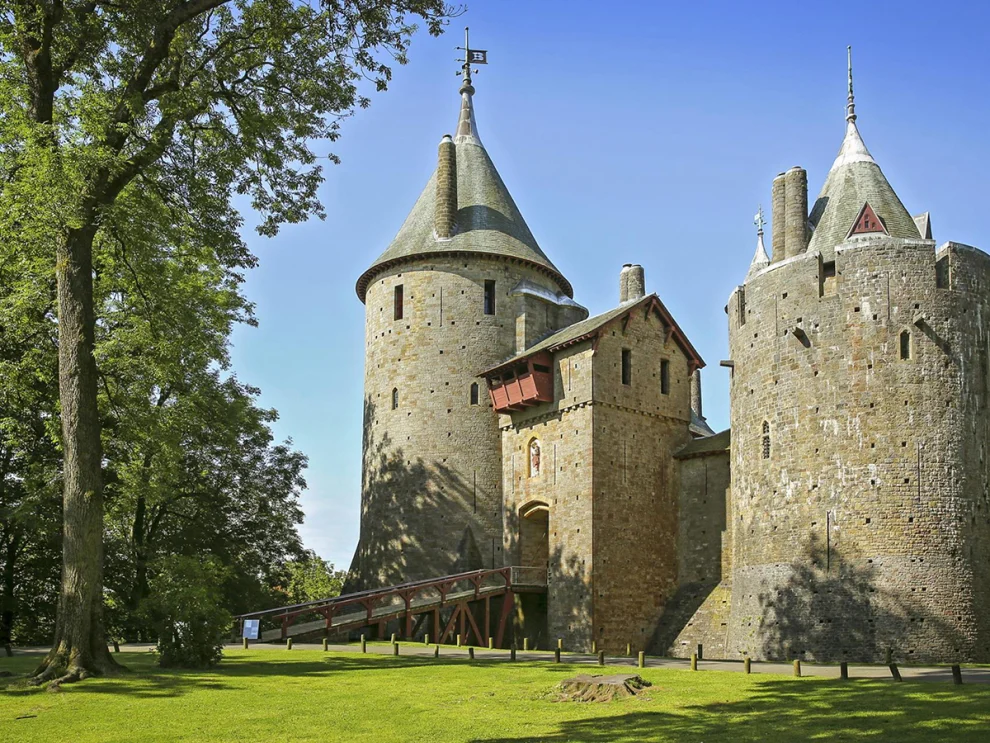


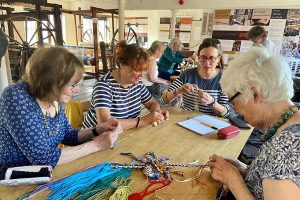
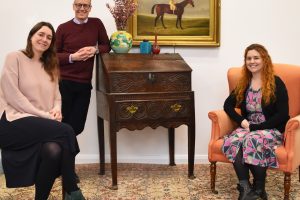
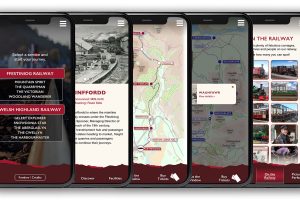









Add Comment